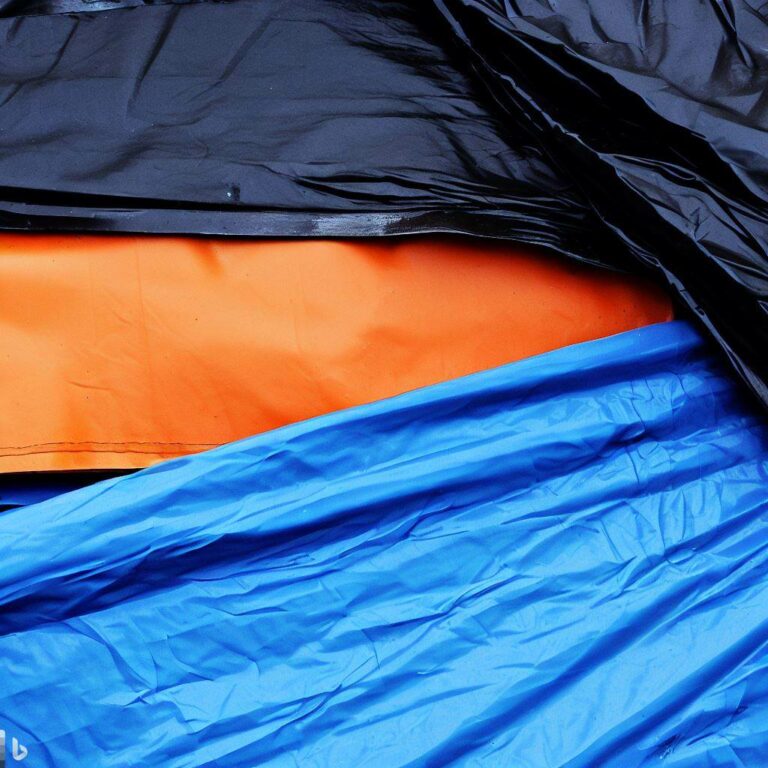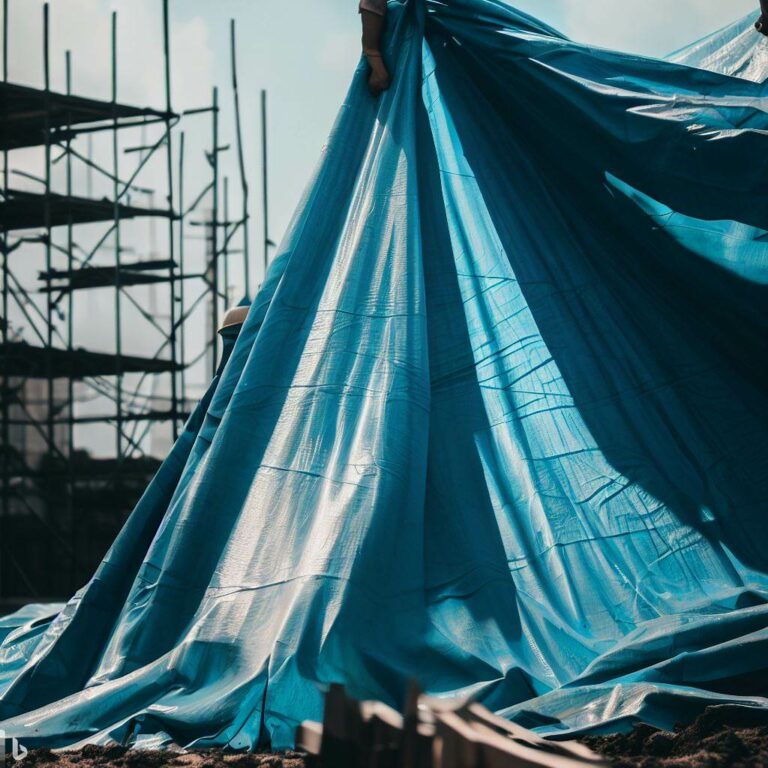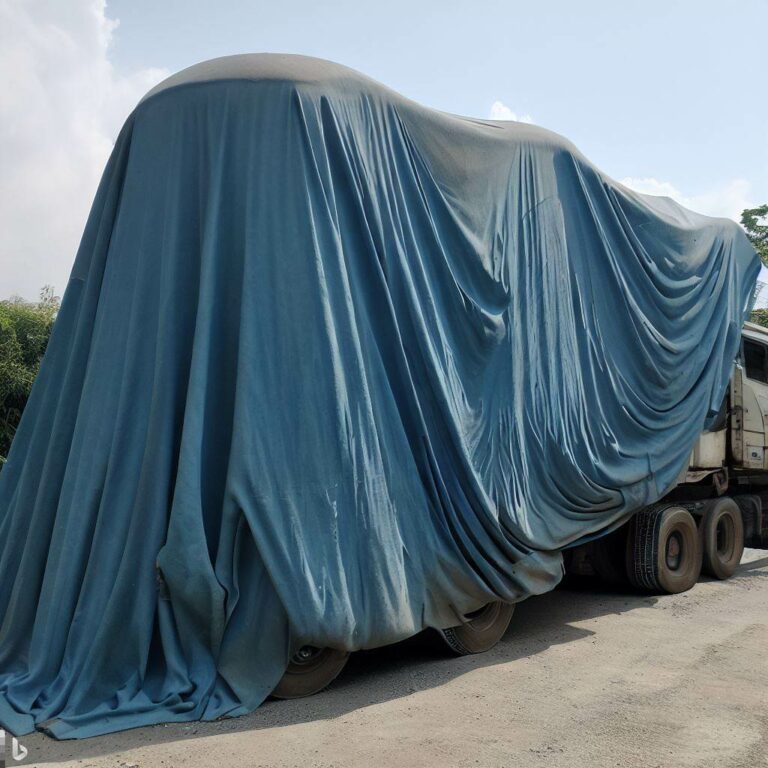Storing Tarpaulin 101: How to Keep Your Investment Safe

Tarpaulin is a versatile and durable fabric that can be used for a variety of purposes. Whether it’s protecting your belongings from the elements during a move or covering a construction site, the tarpaulin is a reliable solution.
However, storing tarpaulin correctly is just as important as using it properly. In this article, we’ll explore some tips and tricks to keep your tarps safe and sound.
What is tarpaulin and why is it important to store it properly?
Tarpaulin, also known as tarps, is a heavy-duty fabric made from materials like canvas, polyester, or polyethylene. Tarps come in various sizes, shapes, and colors, and are used for multiple purposes, including protecting equipment and vehicles from weather damage, covering construction sites, and as a groundsheet for camping.
Storing your tarpaulin properly is crucial to ensure its longevity and effectiveness. Proper storage can prevent damage from moisture, sunlight, pests, and other elements that can weaken the fabric and render it unusable.
Related: What is Tripal/Tarpaulin? Beginner’s Guide to Tripal
How to prepare your tarpaulin for storage
Before you are storing tarpaulin, it’s essential to clean and dry it thoroughly to prevent mold, mildew, and musty odors.
Cleaning your tarpaulin
Start by removing any debris, dirt, or stains on the tarpaulin. You can use a broom, a soft-bristled brush, or a vacuum cleaner to remove dust and debris.
For stains, use a mild detergent and a soft-bristled brush to scrub gently. Rinse the tarpaulin with a garden hose or a pressure washer to remove any soap residue.
Drying your tarpaulin
After cleaning, hang your tarpaulin in a well-ventilated area and let it dry completely. Make sure both sides of the tarpaulin are dry to prevent mildew growth. If you’re in a hurry, you can use a fan or a blower to speed up the drying process.
Choosing the right storage location
The storage location you choose will affect the lifespan and condition of your tarpaulin.
Indoor vs. outdoor storage
Indoor storage is always preferable, but if you must store your tarpaulin outdoors, make sure it’s covered and protected from rain, snow, and direct sunlight. Use a tarp or a cover to protect your tarpaulin from the elements.
Temperature and humidity considerations
Choose a dry and cool place to store your tarpaulin. High humidity can promote mold growth, and extreme heat or cold can damage the fabric. Avoid storing tarpaulin in a basement, garage, or attic that’s prone to temperature fluctuations.
Folding and Storing your tarpaulin
Folding your tarpaulin correctly can ensure that it doesn’t get damaged or creased during storage.
Best folding techniques
Start by laying your tarpaulin flat on a clean and dry surface. Fold the tarpaulin in half lengthwise, then fold it in half again, and repeat until you get a manageable size. Ensure that the folds are even and that there are no wrinkles or creases.
Storing tarps in a garage or shed
If you’re storing tarpaulin in a garage or shed, make sure it’s clean and dry, and there are no sharp objects or tools that can damage the fabric. Hang your folded tarpaulin on a hook or a hanger to keep it off the ground and away from pests.
Storing tarps in a storage unit
If you’re using a storage unit to store your tarpaulin, make sure it’s climate-controlled, and there’s no moisture or humidity. Place your folded tarpaulin on a pallet or a shelf to keep it off the ground and away from pests.
Tips for maintaining your tarpaulin during storage
To ensure that you are storing tarpaulin that stays in good condition, follow these tips:
Inspecting your tarpaulin periodically
Check your tarpaulin periodically to make sure it’s still in good condition. Look for signs of mold, mildew, or pest infestation, and address them immediately.
Keeping pests away
Pests like rodents and insects can damage your tarpaulin and render it unusable. Use mothballs or cedar chips to repel moths and other insects, and place traps or baits to catch rodents.
Avoiding stacking heavy items on your tarpaulin
Avoid stacking heavy items on top of your tarpaulin, as it can damage the fabric and create creases that are hard to remove.
Conclusion
Storing tarpaulin correctly is essential to ensure that it stays in good condition and lasts for a long time. Follow these tips to prepare your tarpaulin for storage, choose the right storage location, fold and store it properly, and maintain it during storage.
FAQs
How do you store tarpaulin?
To store tarpaulin, make sure it is completely dry and clean. Fold it neatly and avoid sharp creases that can cause cracking. Store it in a cool, dry place away from direct sunlight and moisture. A storage bag or container is recommended to protect it from dust and debris.
What is the best storage for tarps?
The best storage for tarps is in a cool, dry place with low humidity. Avoid storing tarps in direct sunlight or areas with high heat, which can cause the material to degrade quickly. Using a storage bag or container also helps to keep the tarp clean and free from dust and debris.
Is it okay to fold a tarpaulin?
Yes, it is okay to fold a tarpaulin. However, it is important to avoid sharp creases that can cause cracking or damage to the material. Instead, fold the tarpaulin neatly and store it in a cool, dry place to prevent any potential damage.
What is the useful life of tarpaulin?
The useful life of tarpaulin depends on various factors such as the quality of the material, frequency of use, and storage conditions. Generally, a high-quality tarpaulin can last for up to five years or more if stored and maintained properly.
How do you extend the life of a tarp?
To extend the life of a tarp, make sure to clean it regularly with mild soap and water. Avoid using harsh chemicals or abrasive materials that can damage the material.
Store the tarp in a cool, dry place away from direct sunlight and moisture. Repair any damages as soon as possible to prevent further deterioration.
Does tarpaulin attract heat?
Yes, a tarpaulin can attract heat, especially if it is a dark-colored material. This can cause the temperature to increase under the tarp, which may lead to damage or melting of the material. It is recommended to use a lighter-colored tarp or a reflective tarp to reduce heat absorption.
How flammable is tarpaulin?
Tarpaulin is typically made from a polyethylene or PVC material, which is highly flammable. The level of flammability depends on the quality of the material and the additives used in the manufacturing process. It is important to keep tarps away from open flames or other sources of heat to prevent the material from catching fire.
What are the disadvantages of tarpaulin?
One disadvantage of tarpaulin is that it can be easily damaged by sharp objects or rough handling. It can also attract heat, which can cause damage or melting of the material. Additionally, tarpaulin is not very breathable and can trap moisture, which can lead to the growth of mold and mildew.
What is the problem with tarpaulin?
The problem with tarpaulin is that it is not a very durable material and can easily become damaged or torn. It also has a limited useful life, which means it may need to be replaced frequently. Additionally, the tarpaulin is not very eco-friendly and can be difficult to dispose of properly.



